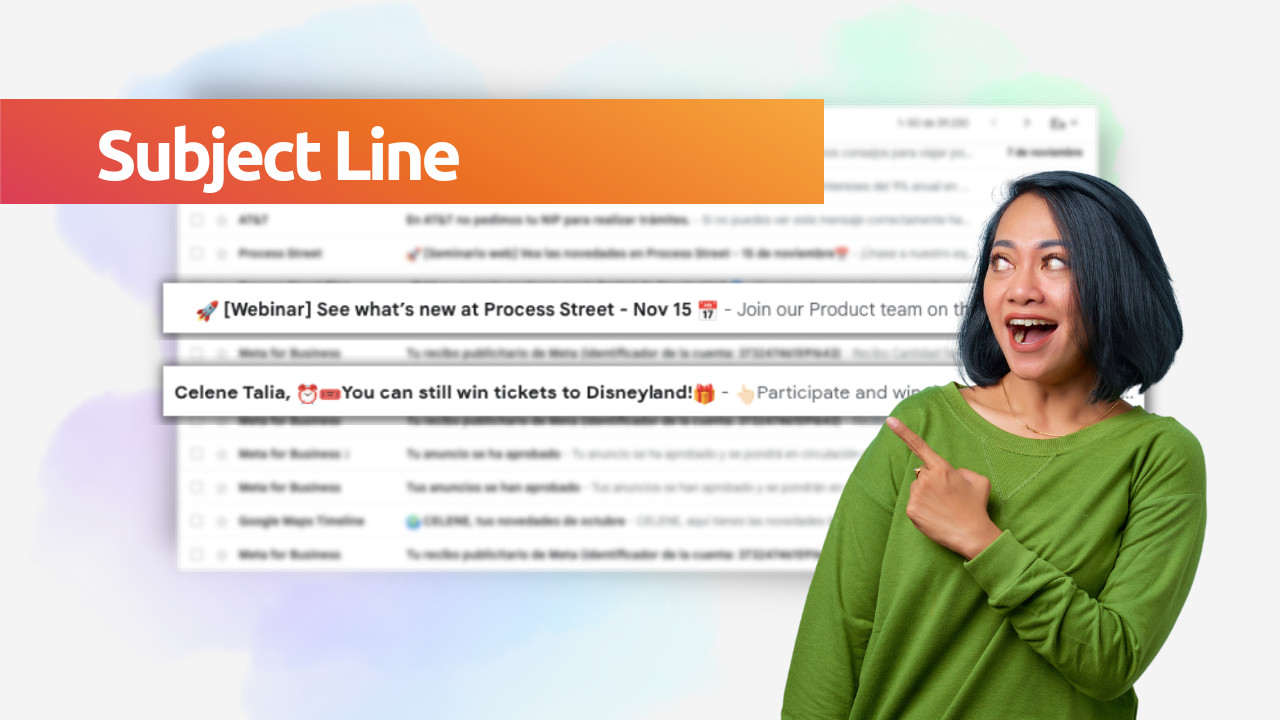Opens and conversions are two of the most commonly trackel email marketing metrics , representing two different yet important actions that email recipients can take. Which one should your campaign focus on? Should you prioritize opens or conversions?
Definitions: Opens vs. Conversions
Let's begin with some of the basic definitions.
In email marketing, an open happens when an email recipient clicks the message and begins to read it. Obviously, the recipient doesn't have to read the email in full or even partially; all that matters is that they click on the message initially.
A conversion happens when an email subscriber takes some meaningful action tied to revenue. That could mean clicking a link to visit your site, responding to the message, or engaging with the message in some other measurable way.
The Case for Prioritizing Opens
There's a case to be made for prioritizing opens in your email marketing campaign.
- Opens are the ultimate gateway. You should have an intuition that opens serve as a kind of gateway for anything else you might want to accomplish in email marketing. Do you want to inform your customers about an upcoming product? They need to open the message before they can read that message. Do you want your customers to watch a video? Again, they're never going to see it unless they open the message first. In line with this, optimizing for conversions is practically useless unless you have a sufficient open rate; if people aren’t opening your messages, there's no chance of them taking any other meaningful action with your messages.
- Impressions are inherently valuable. We also need to consider the fact that user impressions are inherently valuable. When someone opens your message, even if they don't read it in full, they'll see at least some of the content you provided. They might be able to catch the first few seconds of an autoplaying video in your email. They might read the first couple of sentences in your written message. They might see some of the latest photos you've aggregated in your email blast. Even if your customers only think about your new products or new messages briefly, it could incentivize them to make a purchase with your brand in the future.
- Modern tools create new possibilities. Thanks to modern tools like Viewed, it's easier than ever to make the most of your email opens. With Viewed, you can embed any video into the body of your email marketing message and autoplay that video whenever the message is opened. Not only does it make your email look more impressive and exciting, but it also increases the value of each open you receive, achieving up to 200% more conversions.
- Engagement leads to familiarity and trust. A customer doesn't have to make a purchase every time they receive an email to be valuable for your brand. Any customer who thinks positively about your brand and is exposed to your brand regularly enough to keep it top of mind is a customer who will potentially make a purchase in the future. They’re also a customer who might be likely to recommend your brand to other people they know in real life. Email opens are a form of engagement, and each engagement opportunity you have leads to greater brand familiarity and trust.
The Case for Prioritizing Conversions
However, there's also a case to be made for prioritizing conversions.
- Pushing too hard for opens can be gimmicky. Some companies prioritize optimization for opens, using gimmicky subject lines and other sensational tactics to drive as much interest as possible in opening a message. Once the message is open, there's very little engaging material inside. In other words, if you spend too much time optimizing for opens without improving core quality or optimizing for conversions, you could end up doing more harm than good; you would experience a wave of people opening your messages, followed by a wave of people unsubscribing forever.
- Bottom line value is the goal. For most marketers, the ultimate goal is to improve bottom line value; in other words, you need your email marketing strategy to generate revenue. If your fans are constantly opening your emails but never taking action on them, that might feel personally rewarding, but it's not necessarily going to increase the amount of money you make. Only optimizing for conversions can do that.
- Brand familiarity and trust aren’t tangible. It's easy to acknowledge that brand familiarity and trust are good things; if a person trusts your brand and likes your brand, they're more likely to purchase from you in the future or recommend you to someone they know. But these metrics aren't tangible, and it's hard to prove that they're valuable. Conversions give you a target that's much more objectively measurable and therefore much easier to quantify and consider in your strategic planning.
- Higher conversions win the ROI battle. In email marketing, you need to think about your return on investment (ROI). In other words, you need to think about how much money you're making compared to how much you're spending. For the most part, optimizing for conversions will give you a higher ROI then optimizing for opens, although this does presuppose a decent enough open rate that conversions can reliably occur. This is mostly due to the fact that conversions are more closely tied to revenue than opens are.
Why You Need Both
Ultimately, it's not enough to prioritize only for opens or only for conversions. Both are practically necessary if you want to reap the greatest rewards from your email marketing campaign. That said, your brand may favor one over the other because of your specific priorities or because of how your business functions.
No matter what, you can increase engagement and improve first impressions of your brand by providing your email subscribers with better, more engaging content. That means using tools like Viewed to embed and autoplay your best videos. Sign up for free today!




